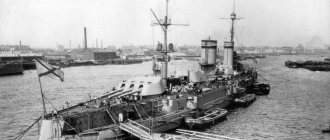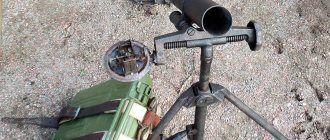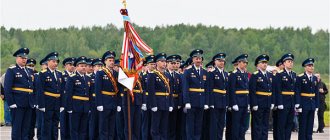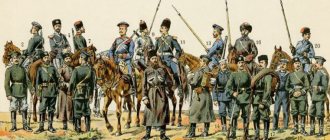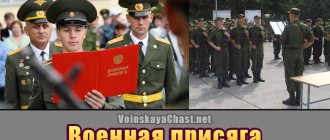BRIEF HISTORY OF ARTILLERY DEVELOPMENT
BRIEF HISTORY OF ARTILLERY DEVELOPMENT
In ancient times, when firearms did not yet exist, people used hand-held throwing weapons - a bow from which they shot arrows (hence the words: “shot”, “shoot”). Then throwing machines appeared, which were used for throwing heavy objects - stones, cannonballs, etc. Such machines were, for example, ballistas and catapults (Fig. 1 and 2).
Rice. 1. Ballista.
Rice. 2. Catapult.
These throwing machines used the elastic force of ox sinews and intestines.
People have been using such machines for more than a thousand years and have well mastered the techniques of their manufacture and methods of using them. However, the most advanced of these machines could throw cannonballs no further than 200 meters.
Somewhat better results were obtained using the elasticity of wood. In the Middle Ages, bricoli appeared (Fig. 3) - throwing machines that fired a shot in the following way: a wooden beam fixed in the machine was bent, pulling it with a chain or rope tied to the upper part of the beam.
Rice. 3. Bricol.
A tetrahedral forged pointed bolt was placed in front of the bent beam. When the chain was released, the freed beam straightened and struck the bolt with great force, which flew towards the target. However, these vehicles provided too little assistance to the troops: they were not long-range enough and did not provide accurate hits. Therefore, in all countries that have reached a certain technical level, for a long time there was a search for new sources of energy and new technical means for throwing projectiles. Such means have been found. The force of powder gases began to be used to throw projectiles.
Even before the beginning of our era, the Chinese knew that if you mix sulfur, saltpeter and coal and bring fire to the mixture, this mixture will flare up and quickly burn, give off a lot of smoke and scatter everything that lies around. The Chinese made this mixture and burned it on major holidays for entertainment.
Other nations learned about this mixture (now this mixture is called gunpowder) from the Chinese. Over time, they learned to use the latent energy that gunpowder possesses to throw projectiles - the gunpowder was placed in a pipe closed on one side, then an iron core was placed in the pipe, a hot rod was brought to the ignition hole in the pipe - an explosion occurred, flames flew out of the pipe and smoke, and an iron core flew at the enemy.
The date of the appearance of firearms in Rus' has not been precisely established. In ancient chronicles there is mention that in 1382, during the defense of Moscow from the troops of Khan Tokhtamysh, firearms were used. It is quite obvious that the first guns in Rus' appeared much earlier than they were first used in battle. The first samples of firearms were very imperfect. They were thick iron pipes with smooth inner walls (Fig. 4); these pipes were strengthened on wooden machines.
Rice. 4. Bombard of the late 14th century.
There were no sights. The tip was rough. They fired stone cannonballs or pieces of iron from such weapons. But already in the second half of the 15th century, cannons from copper and bronze began to be cast in Russia.
Under Ivan the Terrible, artillery began to develop rapidly. In the wars that Ivan the Terrible waged in order to destroy the threat to the peaceful existence of the Moscow state, he used artillery as one of the most powerful means of destruction. For example, during the siege of Kazan in 1552, about 150 heavy guns were concentrated under the city walls. The walls of the city were destroyed by the fire of these guns. Russian troops took Kazan.
In 1547, Ivan the Terrible established rifle regiments, which included artillery. Thus, regimental artillery was created in Russia. In Western European countries, regimental artillery appeared only 50 years later.
With the development of artillery in Russia, wonderful masters of gun production appear. Among such masters, first of all, it is necessary to note Andrei Chokhov. The “Tsar Cannon” cast by him in 1586 (Fig. 5) testifies to the extraordinary abilities of the master and the high level of gun production for that time.
Rice. 5. Tsar Cannon.
Not a single foreign master has been able to cast such a weapon. The Tsar Cannon has a caliber of 89 centimeters, a length of 5 meters and a weight of 39 tons.
Russian artillery achieved great development during the reign of Peter I. During this period, a regular army was created and Russian artillery was reorganized. Peter I gave artillery a coherent organization and streamlined artillery production (the number of calibers was reduced and the weight of the gun was reduced) [3]; he also laid the foundation for systematic artillery education and achieved a high level of combat training. Peter I divided the artillery according to the nature of the tasks performed into field (including regimental), fortress and siege. He also created horse artillery (horse artillery appeared in the West only 50 years later).
All of Peter I’s concerns about artillery paid off handsomely. Russian artillery has become a formidable and powerful force, capable of breaking the resistance of any enemy.
Russian artillery played a major role in the Battle of Poltava in 1709. In this battle, the best army at that time in Western Europe - the army of the Swedish king Charles XII - was completely defeated by Russian troops. In the Seven Years' War with Prussia (1756–1762), Russian troops won a brilliant victory over the troops of Frederick II. His army, considered "invincible", was defeated. Armed with “unicorns” [4], our artillery showed its undeniable superiority over the artillery of the Prussian army.
The great commanders A.V. Suvorov and M.I. Kutuzov well understood the enormous importance of artillery in military operations. Thus, artillery played a very important role in the heroic assault on Ishmael. In the Italian and Swiss campaigns (1799), Russian artillerymen, under the most difficult conditions, fired destructive fire at the enemy; At the same time, they showed unprecedented endurance and resilience.
During the Patriotic War of 1812, Russian artillery had to engage in single combat with French artillery, which at that time occupied first place in Western Europe. In all battles with the enemy, the advantage remained on the side of the Russian artillerymen. Particularly outstanding fighting qualities of Russian artillery were demonstrated in the Battle of Borodino.
Heroic defense of Sevastopol in 1854–1855. brought new glory to Russian artillerymen. The artillerymen of the Sevastopol garrison stood to the death at their guns. For every step of their advance, the enemy paid at the cost of huge losses.
The history of Russian artillery of the second half of the 19th century is remarkable for great achievements in the field of artillery science and important inventions in the field of artillery technology.
Until the mid-19th century, artillery in all countries was armed with smooth-bore guns, which were loaded from the muzzle and fired ball-shaped projectiles.
The Crimean War (1853–1856) showed that smooth-bore guns had already outlived their usefulness: they did not meet the requirements of modern combat. Longer-range and more accurate-firing guns were needed.
As a result of a series of works and research, rifled guns (with rifling in the bore)[5] were created that met these requirements. The rifling is needed to ensure the correct flight of the projectile in the air, and the flight will be correct if the projectile flies head first throughout its entire path. As studies have shown, a projectile rotates around its axis and flies correctly in the air.
Shells for rifled guns are made not spherical, as for smooth-bore ones, but oblong. A copper ring is attached to the projectiles - the so-called leading belt. When a projectile, under the influence of powder gases, begins to move in the barrel, the leading belt cuts into the rifling (copper is a softer metal than the metal of gun barrels) and the projectile, simultaneously with translational motion, acquires a rotational motion around its axis.
Russian artillerymen began creating rifled guns in 1856. To create rifled guns with good ballistic qualities, it was necessary to solve difficult problems in the field of technology and ballistics - a science that studies the conditions and laws of movement of projectiles in the gun channel and in the air. These problems have been solved.
In 1858–1859 under the leadership of N.V. Maievsky, tests were carried out on 4-pound rifled copper cannons[6], loaded from the muzzle. These guns, which had 6 screw rifling and fired a grenade with zinc protrusions, were put into service in 1860.
To further improve the combat properties of the gun, it was necessary to increase the firing range and accuracy. An increase in range was achieved by increasing the charge, and this led to an increase in pressure in the barrel. A stronger barrel was needed. Copper, bronze and cast iron gave way to a more durable metal - steel. To increase the combat properties of the gun, it was also necessary to correctly calculate the initial velocity of the projectile, that is, the speed at which the projectile flies out of the gun, and to study the flight of the projectile in the air. The artillery scientist N.V. Maievsky took on the solution to this problem. His achievements in this area were very great. The laws he discovered were the basis for the design of a wide variety of artillery systems.
The final rearmament of Russian artillery with rifled guns dates back to 1867.
In 1867, 4-pound rifled steel guns, loaded from the breech and having a wedge breech, were adopted. In the same year, under the supervision of N.V. Maievsky, 8-, 9- and 10-inch steel coastal guns were designed and manufactured, intended for firing large charges.
Later, the famous artillery scientist Professor A.V. Gadolin proposed a new method for making the barrels of long-range and rapid-fire guns, namely: making a gun barrel not from one, but from several layers. A.V. Gadolin developed this method of making barrels in detail and scientifically substantiated it. In addition, A.V. Gadolin proposed the use of so-called prismatic gunpowder[7]. In Russia, this gunpowder began to be produced earlier than in other countries. The works of N.V. Maievsky and A.V. Gadolin brought well-deserved fame to their authors. These works became known not only in Russia, but also in Western Europe.
The talented Russian artilleryman S.S. Semenov put a lot of work into the creation of Russian rifled artillery. He paid especially much attention to the design of carriages[8].
In 1867 he built an iron carriage for a 6-inch copper mortar. And a year later he designed carriages for guns of larger calibers - 8-9 inches. S.S. Semenov designed and also built carriages for siege and fortress cannons. These carriages were very durable and were successfully used even during the first imperialist war.
Thus, as a result of the tireless work of outstanding Russian artillery scientists, by the 70s of the last century, Russia already had guns that fired relatively far and accurately. The number of calibers was reduced: mainly during this period, guns of two calibers were manufactured - 4-pounder and 9-pounder. The guns became lighter and stronger.
Among the remarkable Russian inventors of the second half of the 19th century, it is necessary to note V. S. Baranovsky. In the 70s, the first rapid-fire field gun was manufactured according to his design. Thus, the idea of a rapid-fire gun was first implemented in Russia. In 1872–1877 V. S. Baranovsky developed a number of samples of 2.5-inch rapid-fire guns for horse and mountain artillery.
For his guns, V.S. Baranovsky developed a recoilless carriage. When fired, a gun with such a carriage remains almost in the same place as before the shot; Only the gun barrel rolls back. Thanks to this calculation, there is no need to waste time returning the gun to the place where it was before the shot. In addition, V. S. Baranovsky proposed the first unitary cartridge. A unitary cartridge is a projectile connected to the cartridge case in which the charge is located into one whole. When firing a unitary cartridge, the time required to load the gun is reduced—the gun is loaded in one go. During one of the tests conducted in 1879, V. S. Baranovsky died tragically.
To outstanding figures of the second half of the 19th century. in the field of artillery belongs to A.P. Engelhardt. His name is associated with the creation of a 6-inch wheeled field mortar, which was put into service in 1885. With the adoption of this weapon, the creation of heavy field artillery began. With the active participation of A.P. Engelhardt, work was carried out on the design of elastic carriages, in particular, A.P. Engelhardt developed a carriage for a 3-inch (76 mm) rapid-fire gun mod. 1900 A.P. Engelhardt for the first time in Russia carried out the suspension of carriages, limbers and charging boxes with buffers.
At the beginning of the 20th century, the Russian artillery adopted a new weapon - a 3-inch field rapid-fire gun mod. 1902 (Fig. 6).
Rice. 6. 3-inch (76 mm) field rapid-fire gun mod. 1902
This gun was an improved 3-inch rapid-fire gun of the 1900 model. It had a hydraulic recoil brake and a spring-loaded knurler. The 3-inch field rapid-fire gun had a muzzle velocity of 588 meters per second, which was 58 meters per second higher than the muzzle velocity of the 75 mm French gun. The firing range of this gun was 6400 meters, the rate of fire was 12 rounds per minute. The weapon was distinguished by its durability and endurance.
In 1904, a rapid-fire howitzer (a special type of weapon - see below), manufactured at the Obukhov plant, was put into service. This howitzer had an original design. The big news was its counterbalance mechanism in the form of a spring that supported the muzzle. Later, this principle of barrel balancing was borrowed by the German company of the cannon king Krupp.
During the Russo-Japanese War, horse-drawn batteries were formed from siege artillery. This is how “field heavy artillery” was created.
During the period between the Russo-Japanese War and the First World War, many old systems were improved and new ones created. By the beginning of the First World War, there were mountain cannons mod. 1909, 122 mm howitzers mod. 1909 and arr. 1910, heavy field 107-mm guns mod. 1910, 152 mm howitzers mod. 1909 and arr. 1910 and 152 mm guns mod. 1910. But high-power artillery was armed with only old-style guns. Meanwhile, by that time Russian artillerymen had already designed several new gun systems, remarkable in their qualities. The tsarist government did not use the projects they proposed. Some of them even fell into the hands of foreigners.
The following case is interesting.
In 1913, a member of the Artillery Committee, R. A. Durlyakhov, developed a project for a powerful howitzer with a caliber of 420 millimeters. Calculations showed that a shell from this weapon could destroy any strong fortification. However, Russian factories could not produce this howitzer, and the order was transferred to the French Schneider factory. The French were in no hurry to produce a prototype. Meanwhile, the Germans, who were intensively preparing for war, learned that a powerful howitzer had been designed in Russia. They. We tried to familiarize ourselves with the project and use it for our own purposes. As a result, the Germans by the beginning of the war of 1914–1918. a new powerful weapon has appeared.
In 1913, the Russian engineer F. F. Lender developed a design for an anti-aircraft gun, but it was only in 1915 that the first four anti-aircraft guns were manufactured. This delay is explained by the underestimation of the role of aviation in the war and the desire to assign the task of combating aviation to 76-mm guns mod. 1902
The First World War brought a lot of new things into the development of artillery. The very first months of the war showed that it was possible to solve the problems that this war posed to the artillery only with the availability of guns of various types and calibers. Rapid-firing cannons, field howitzers, long-range cannons and heavy siege-type howitzers were needed. Special artillery was also needed: close combat guns for trench warfare, anti-aircraft guns, anti-tank guns, as well as light assault guns designed to directly accompany infantry in battle. By the end of the war, each warring country had tens of thousands of different weapons.
After the war of 1914–1918 Special types of artillery appeared, for example anti-tank and anti-aircraft. Mortars were adopted. The successes of Russian artillery were undeniable, but the weak technical base and low level of industrial production in Tsarist Russia could not ensure the comprehensive development of artillery.
During the civil war of 1918–1920. Soviet artillery took shape organizationally, became stronger and took one of the first places among other branches of the military. In fierce battles with the troops of the White Guard generals and foreign invaders, new foundations were laid for the combat use of artillery.
During the years of socialist construction, the Communist Party and the Soviet government paid great attention to the development of artillery, improving its military equipment and increasing the power of its fire.
Thanks to the tireless efforts of the Communist Party, by the beginning of the Great Patriotic War, Soviet artillery had become first-class. Neither qualitatively nor quantitatively could the artillery of any foreign army compare with it.
The main advantage of Soviet artillery over foreign artillery is that Soviet artillery is developing in accordance with the most advanced views on the role and significance of artillery fire in modern warfare.
By the beginning of the Great Patriotic War, new 76-mm cannons, 122-mm cannons and howitzers, 152-mm cannons, howitzers and howitzer-guns, 203-mm howitzers, 82- and 120-mm mortars, 37-, 76- and 85-mm anti-aircraft guns.
The development of artillery was greatly facilitated by the fruitful activities of many Soviet designers who went through the school of Soviet military science.
The further development of Soviet artillery was characterized by the rapid growth of special types of artillery - anti-tank, tank, anti-aircraft artillery of small and medium caliber, aviation artillery, which armed attack aircraft and fighters.
During the war, work on creating new types of artillery weapons expanded even more widely. In the very first years of the war, ground and anti-aircraft artillery were armed with new material. The Soviet Army received rocket launchers, which no other army had before. Soviet artillery was well equipped with fire control devices and all types of reconnaissance and communications equipment.
During the Great Patriotic War, our socialist industry fully satisfied the growing needs of the front for all types of artillery weapons. During the last three years of the war, our artillery factories produced annually up to 120,000 guns of various calibers.
This huge number of guns had to be provided with ammunition.
Our industry has coped with this task with honor. For example, in 1944 alone, over 240 million shells, bombs and mines were produced, which is 4 times the amount of ammunition produced by the industry of Tsarist Russia during the First World War.
Asian background[edit]
distant ancestor of the Katyusha, ancestor of cruise missiles
After the Chinese invented gunpowder, it was used for a long time mainly as a weapon, and they could not make a formidable weapon based on it. However, in the 13th century, China already knew artillery guns and wrote treatises on their use (it was this century, or rather 1288, that the oldest bombard in the world, of course, made in China, was dated).
In the same thirteenth century, gunpowder and cannons were borrowed from the Chinese by the Arabs. The first documented use of siege artillery by the Arabs was in 1274, the siege of the city of Sijilmas.
The penetration of gunpowder into Europe dates back to approximately the same century. Gunpowder, but not how to use it. The first cannons in Europe appeared in Spain, borrowed from the Arabs, at the turn of the 13th-14th centuries.
Military rockets were also invented in China.
The prototype of the hand gun was the “fire spear,” which was the Chinese version of the hand flamethrower.
What is artillery
Artillery contains the maximum power during the offensive or defense in the land theater of military operations (TVD). According to Russian standards, artillery begins with a gun caliber of 20 mm and above. Everything below is small arms. This leads to the well-known joke that the KS-23 carbine, which is in service with the police, is an artillery piece.
KS-23 (special carbine, cal. 23 mm). According to GOST - cannon
In reality, during combined arms combat, it is artillery that inflicts maximum damage on the enemy. Moreover, guns with a caliber of 6 inches (152 mm) and higher can use tactical nuclear projectiles.
Artillery can be towed and self-propelled, cannon and rocket, land, sea, etc. The number of types and subtypes of artillery, as well as the range of ammunition used, is so great that no article is enough to describe the whole variety of types and types of artillery.
Ammunition[edit]
- Arrows - the earliest weapons, especially small-caliber ones, could be loaded with an arrow like a scorpion (erroneously called a ballista)
- Stone shot - the predecessor of buckshot
- Buckshot
- The cores were first stone, then cast iron. For an incendiary effect, before the invention of red-hot cannonballs, a cannonball of reduced diameter was taken and wrapped in tow, soaked in fuel and set on fire.
- Heated cannonballs - the best incendiary effect was achieved if the cannonball was heated not just to red heat, but to white heat. But to heat the core this way in a special furnace (which appeared in modern times) it took about three hours, so they usually limited themselves to heating it to red heat. I’m the only one who’s curious: how to put a red-hot piece of iron into a gun, whether it’s loaded from the muzzle, from the treasury, with a linen cap containing gunpowder or a cardboard can, and at the same time manage to run away to a safe distance and save the crew itself? The hot piece of iron was insulated with wet thick wads and clay - the main thing was to have time to shoot before this piece of iron dried out and burned through the wads
| This is a work in progress. You can help by correcting and expanding it . |
V-3: "Long Gustav"
The only powerful artillery piece that found effective combat use among the Nazis was a cannon called the Long Gustav, created by the Germans as part of the V-3 project. V. Lei was the first to talk in detail about this miracle of artillery in his book “Rockets and Space Flights”. Using the Long Gustav, the Germans planned to fire heavy shells from the French coast across the English Channel into Great Britain. The cannon shells weighed 7.5 tons, with a firing range of 120 kilometers. Moreover, the weapon had a unique design. The Long Gustav's barrel was 150 meters long, from which a 150 mm caliber projectile was fired at a speed of 1500 m/s. Such high speed was achieved due to several powder chambers located along the barrel. As the projectile moved along the barrel, it seemed to be “adjusted” several times. It is difficult to say what would have awaited Great Britain had the Germans deployed several dozen Long Gustavs, but the Allied landings in Normandy prevented these plans from coming true. This is the history of the largest artillery pieces of the last hundred years, which became the dawn of this type of military service. Nowadays, as mentioned above, artillery has largely given way to missile technology and other types of weapons.
Magazine: War and Fatherland No. 2(43), February 2022 Category: Dmitry Sokolov Author: Interesting weapons
Tags: Germany, Russia, war, World War I, World War II, weapons, War and Fatherland, USA, artillery, gun, cannon, railgun, self-propelled gun, mortar, Dmitry Sokolov
- Back
- Forward

